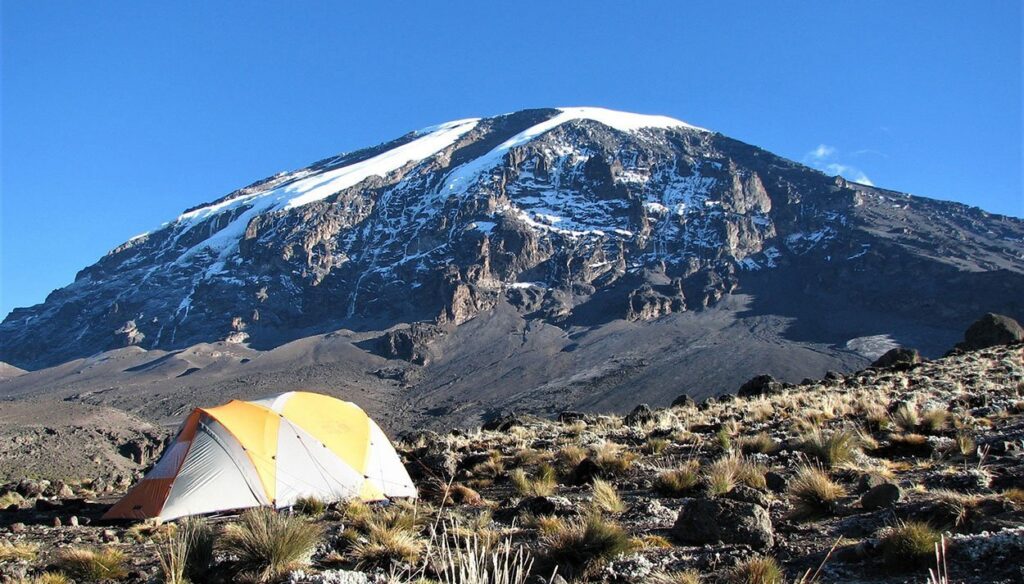Embarking on a journey to conquer Mount Kilimanjaro is a thrilling adventure that demands careful planning, especially when it comes to selecting the right hiking gear. As Africa’s tallest peak, Kilimanjaro presents climbers with diverse challenges, from high altitude to rapidly changing weather conditions. To ensure a safe and successful ascent, here are some essential hiking gear recommendations:
1. Durable Hiking Boots
A solid pair of hiking boots is vital for tackling Kilimanjaro’s varied terrain, which includes rocky paths, loose scree, and potentially icy slopes at higher elevations. Opt for boots that offer excellent ankle support, a durable sole, and are well broken-in before your climb to prevent blisters and discomfort.
2. Layered Clothing System
Kilimanjaro’s climate varies dramatically from tropical warmth at the base to freezing temperatures near the summit. A layered clothing system is essential for adjusting to these changes. Start with moisture-wicking base layers, add insulating mid-layers for warmth, and finish with a waterproof and windproof outer shell to protect against the elements.
3. Warm Insulated Jacket
A high-quality insulated jacket is crucial for staying warm during cold nights and the final push to the summit. Choose a jacket with either synthetic or down insulation, balancing warmth with packability and weight, ensuring it’s easy to carry in your pack.
4. Thermal Base Layers
Thermal underwear, both tops and bottoms, are essential for cold weather comfort. These moisture-wicking layers help regulate your body temperature and provide additional warmth, especially during summit attempts and overnight stays at high altitudes.
5. Cold-Weather Sleeping Bag
A sleeping bag rated for sub-zero temperatures is a must for a restful night’s sleep in Kilimanjaro’s high camps. Look for options that are lightweight, compressible, and offer ample insulation to keep you warm throughout the night.
6. Trekking Poles
Trekking poles are invaluable for maintaining stability on Kilimanjaro’s steep and uneven trails. They reduce the strain on your knees during descents and provide extra support and propulsion during ascents, helping to conserve energy over the long trek.
7. Headlamp with Extra Batteries
A reliable headlamp is essential for navigating the trails in the early morning darkness, particularly during the summit push. Opt for a headlamp with adjustable brightness settings, and always carry spare batteries to ensure you’re never left in the dark.
8. High-Altitude Sun Protection
The intense UV rays at high altitudes can be harsh on your skin and eyes. Protect yourself by packing sunscreen, SPF-rated lip balm, and UV-blocking sunglasses. A wide-brimmed hat or buff can also help shield your face and neck from the sun.
9. Hydration System
Staying hydrated is key to a successful Kilimanjaro climb. Bring a hydration bladder or water bottles with a capacity of at least three liters. To prevent freezing at higher elevations, insulate your bottles and consider adding electrolyte tablets to maintain your energy levels.
10. Weatherproof Backpack
A backpack with a capacity of 30-40 liters is ideal for carrying your essential gear, snacks, and clothing layers. Ensure it includes a rain cover or pack your items in waterproof stuff sacks to protect them from the mountain’s unpredictable weather.
Final Thoughts
Equipping yourself with the right gear is crucial for a safe and enjoyable Kilimanjaro climb. Proper preparation will allow you to focus on the incredible experience of reaching the summit. For personalized advice, consult with experienced climbers or tour operators who can provide recommendations tailored to your specific route and itinerary. With the right gear, you’ll be well-prepared to take on Africa’s highest peak and create unforgettable memories on this epic adventure.


